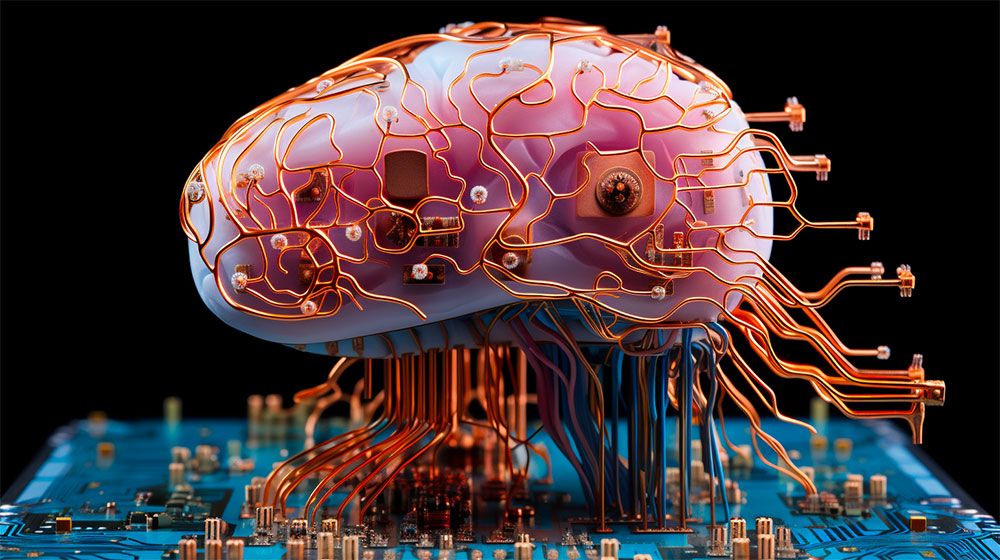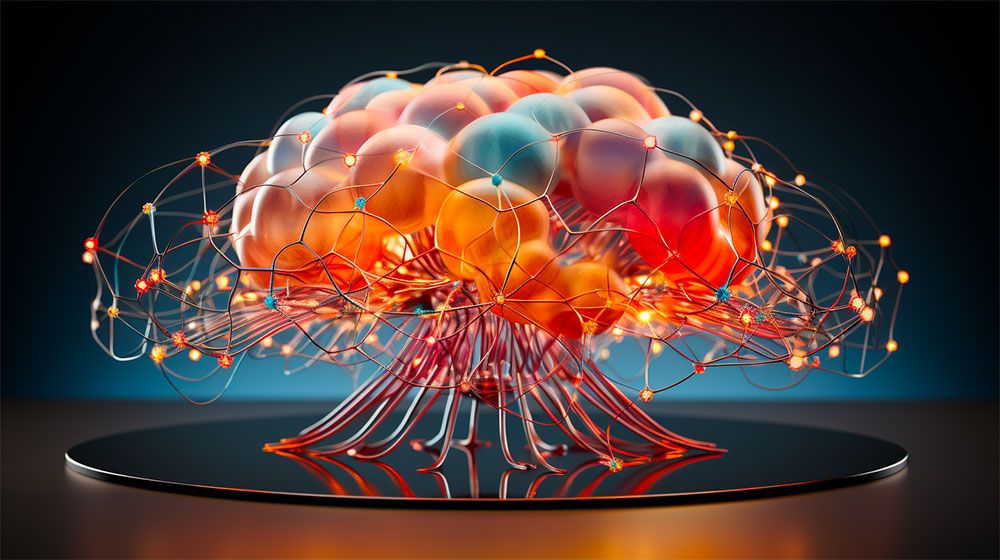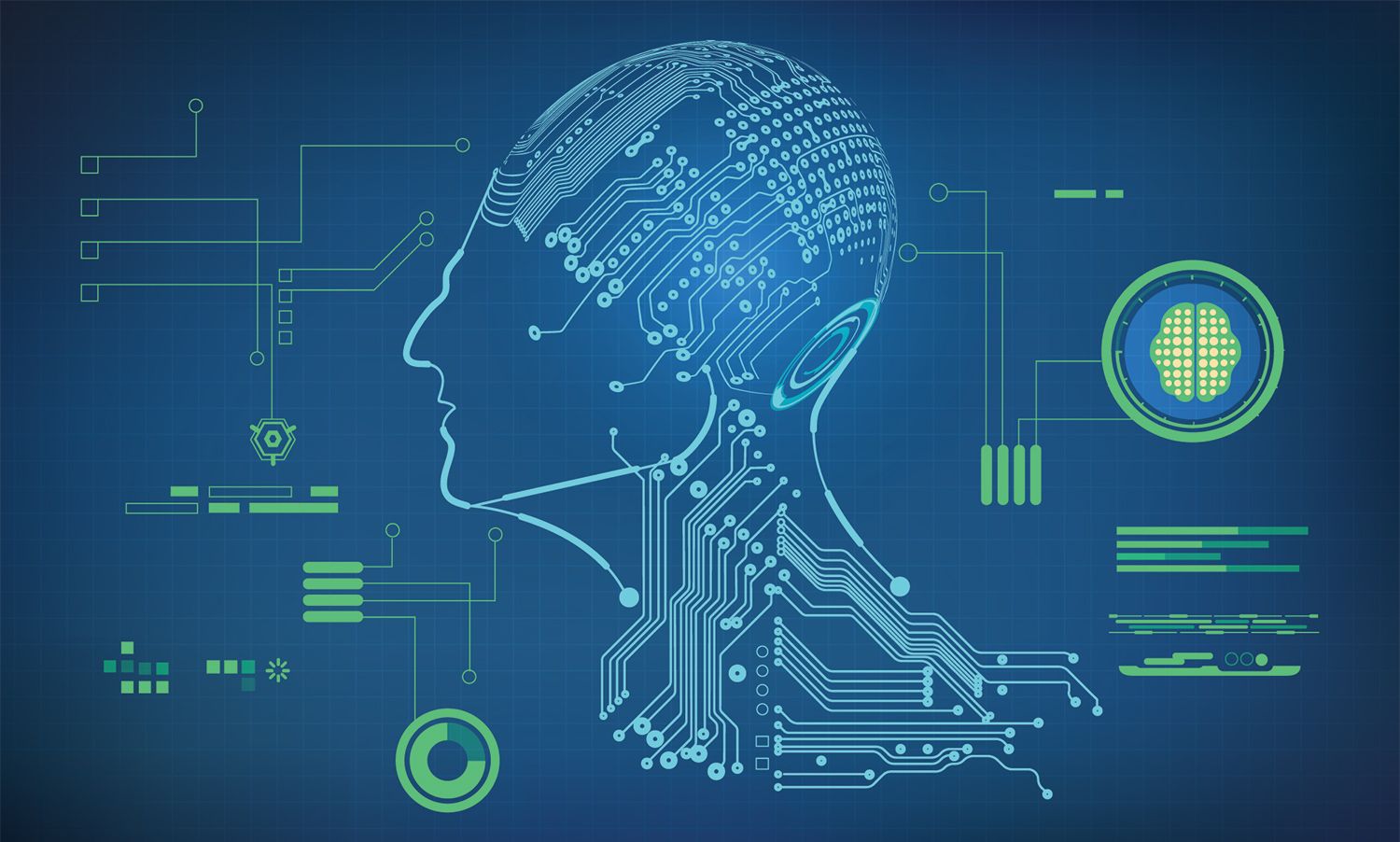The Mind-Bending World of Brain-Computer Interfaces: How the Technology Will Change Humanity

In the constantly changing environment of technological advancement, few frontiers hold as much promise and intrigue as Brain-Computer Interfaces (BCIs). These groundbreaking systems bridge the chasm between the human mind and machines, offering a glimpse into a future where thoughts and actions converge seamlessly with digital technology. With each passing year, BCIs inch closer to becoming a transformative force, redefining the boundaries of human capabilities and sparking debates on ethics, privacy, and the very essence of what it means to be human. I first wrote about Brain-Computer Interfaces two years ago, so it is time for an update.
The concept of BCIs has long been a staple of science fiction, where characters interact with computers and devices using only their thoughts. However, recent advancements in neuroscience, machine learning, and engineering have thrust BCIs from the realms of fiction into the realms of reality. Today, BCIs are not just theoretical dreams but tangible tools with the potential to revolutionise numerous aspects of our lives, from healthcare and communication to gaming and education.
Understanding Neural Signaling and Brain Implants

Before we begin to explore the realm of BCIs and their potential to reshape humanity, it is essential to grasp the foundational concept of neural signalling, which serves as the brain's communication method. This intricate system relies on electrical and chemical signals to transmit information within our brains and throughout our bodies. Neurons, the fundamental components of this extensive communication network, exchange messages through electrical impulses known as action potentials. These signals traverse along nerve fibres, forming intricate neural circuits that govern our thoughts, emotions, and actions.
We need to understand this neural language to fully realise the potential of BCIs. Decades of dedicated research have equipped us with a solid understanding of how neurons communicate, providing the basis upon which BCIs are constructed.
Among the most impressive features of BCIs is their capacity to directly interface with the human brain. This direct connection is made possible through the use of brain implants, also referred to as neural prosthetics or neurostimulation devices. These minuscule and highly advanced devices are surgically inserted into the brain, acting as intermediaries between our neural signalling and external technology.
In the field of medical applications, brain implants have demonstrated their potential for restoring lost sensory or motor functions. In a noteworthy example from 2019, researchers at the University of California, San Francisco, developed a brain implant that allowed a paralysed woman to type at a rate of eight words per minute, utilising only her thoughts. This invention demonstrated the ability of BCIs to improve the quality of life for people with severe disabilities by converting neural signals into text on a screen. As we know now, that demonstration was only the beginning.
The true marvel of BCIs resides in their ability to decipher patterns of brain activity and convert them into commands for external devices, a process commonly known as brain-computer communication. This intricate procedure relies on advanced algorithms and machine learning techniques.
A notable example is the BrainGate system, a collaborative effort between researchers at Brown University and Massachusetts General Hospital. BrainGate employs an array of microelectrodes implanted in the motor cortex to record neural signals linked to intentions for movement. These signals are subsequently translated into commands, enabling users to control computer cursors, robotic arms, or even their own wheelchairs with remarkable precision.
BCIs have also made significant strides in deciphering more intricate cognitive processes. This technology has the potential to help people with visual impairments or usher in completely new forms of communication by analysing neural patterns related to object recognition.
Neural signalling and the development of BCIs have made significant strides in recent years, both through brain implants and wearable BCI devices. While brain implants involve surgical procedures for direct neural access, wearable BCIs have evolved as non-invasive alternatives that harness neural signals through external sensors. For instance, devices like the EEG-based "Muse" headset detect and interpret brainwave patterns, enabling users to control digital interfaces, and prosthetic limbs, or even communicate with devices without the need for surgical intervention. This broad spectrum of neural interface technologies is revolutionising how we bridge the gap between the brain and machines, offering a range of options to cater to individual preferences and needs.
In such a rapidly developing field, the possibilities appear boundless, and the voyage to decode the complexities of the human mind is far from complete. The transformative potential of brain-computer interfaces is becoming more and more clear as we continue to improve our understanding of neural signalling and brain implants' capabilities. The fusion of human intelligence with machine capabilities holds the promise of revolutionising not only individual lives but also the very fabric of our society.
Innovations Enabling High-Resolution BCIs

As the field of Brain-Computer Interfaces (BCIs) continues to progress, a select group of companies has emerged as pioneers, pushing the boundaries of what is possible in the realm of high-resolution BCIs. These organisations are not just developing futuristic technologies; they are actively working to make BCIs an accessible reality for the masses. Here, we will take a closer look at some of the prominent players leading the charge:
1. Neuralink
Founded by entrepreneur Elon Musk, Neuralink has become synonymous with the quest to combine the human brain and computers. The company's ambitious goals include treating neurological disorders and ultimately achieving symbiosis between humans and artificial intelligence (AI). Neuralink has unveiled innovative devices like the ‘Link’, which features thousands of tiny electrodes, allowing for precise and high-resolution brain activity monitoring.
Neuralink, Elon Musk's brain-computer interface company, just received FDA approval to start the first human trials of its implantable chip that aims to enable paralyzed patients to control devices with their thoughts. The chip will be robotically installed in volunteers with spinal cord injuries or ALS. However, past investigations into Neuralink's animal testing and hardware transport have raised some ethical concerns.
2. Ctrl-Labs
Ctrl-Labs, which was acquired by Meta, is on a mission to decode human intention using electrical signals in our muscles and neurons. Their novel approach involves wearable devices that capture neural signals transmitted to our hands, making it possible to control digital interfaces with remarkable fluidity. This technology could revolutionise how we interact with augmented and virtual reality environments.
3. Kernel
Kernel is another groundbreaking company focused on advancing brain science and BCIs. They are working on implantable devices that aim to enhance cognitive abilities and address neurological disorders. Kernel's vision revolves around understanding the intricacies of the human brain to unlock its full potential.
Notable Breakthroughs in High-Resolution BCI Development
In the race to develop high-resolution BCIs, several notable breakthroughs have captured the imagination of scientists and the public alike:
Miniaturisation of Electrodes: Devices like Neuralink's Link make use of thousands of tiny electrodes that can record and stimulate brain activity with unsurpassed precision. This miniaturisation not only reduces the invasiveness of implantation but also enhances the resolution of neural data capture.
Closed-Loop Systems: BCIs are evolving from passive data recording to active, closed-loop systems. This means that they can not only monitor brain activity but also provide real-time feedback and stimulation to the brain. For example, researchers have used closed-loop BCIs to control epileptic seizures by detecting abnormal brain activity and delivering targeted electrical stimulation to prevent seizures.
Machine Learning Advancements: High-resolution BCIs heavily rely on advanced machine learning algorithms to decipher complex neural signals. These algorithms can decode intentions, emotions, and even specific thoughts from brain activity patterns. For instance, researchers have used machine learning algorithms to decode intentions such as moving a cursor on a screen just by analysing brain signals. As machine learning techniques continue to evolve, the accuracy and speed of BCIs are poised to improve significantly.
These advances in high-resolution BCI technology are a huge step forward in our quest to better understand and interact with the human brain. While there are still challenges and ethical concerns in this field, the progress made by companies and researchers is undeniably exciting. It brings us closer to a future where BCIs seamlessly integrate with our daily lives, offering unprecedented opportunities for communication, health, and human potential.
Restoring Function Through Motor BCIs
In the realm of Brain-Computer Interfaces, few applications hold as much promise and potential for real-world impact as Motor BCIs. These outstanding technologies are specifically designed to restore lost motor functions, offering hope and newfound independence to individuals grappling with paralysis or severe mobility limitations.
Motor BCIs operate on the principle of bypassing damaged or disconnected neural pathways by intercepting the brain's motor signals and translating them into actionable commands for external devices. This breakthrough technology has the potential to revolutionise the lives of those living with paralysis due to spinal cord injuries, neurological disorders, or other debilitating conditions.
At the heart of Motor BCIs lies the concept of neuroprosthetics, devices engineered to mimic and augment the functions of impaired or missing body parts. These advanced prosthetic systems bridge the gap between neuroscience and engineering, enabling individuals to regain mobility, dexterity, and even a sense of touch.
A shining example of this innovation is the LUKE Arm, a neuroprosthetic named after Luke Skywalker's bionic limb in Star Wars. Developed by Mobius Bionics and Segway inventor Dean Kamen, the LUKE Arm boasts a remarkable degree of dexterity and responsiveness. Users can manipulate the arm with remarkable precision thanks to Motor BCIs that decode their intentions from neural signals, allowing them to perform tasks once thought impossible.
Inspiring Real-world Success Stories of Motor BCIs
The impact of Motor BCIs is perhaps most profoundly felt when we witness the real-world success stories of those whose lives have been transformed. Here are a few inspiring examples:
Restoring Speech and Expression to Stroke Survivor
In a remarkable demonstration of the transformative power of BCIs, Ann, a survivor of a brainstem stroke that left her severely paralysed, has regained her ability to communicate using cutting-edge BCI technology. After years of immobility, Ann became part of a research project led by UC San Francisco and UC Berkeley, where scientists implanted a paper-thin array of electrodes on the surface of her brain. These electrodes intercepted the brain signals that would have controlled the muscles for speech and facial expressions.
Through painstaking training, artificial intelligence algorithms learned to recognise Ann's unique brain signals for speech, decoding words from phonemes and achieving a remarkable speed of nearly 80 words per minute. Notably, to enhance the naturalness of her communication, researchers employed a digital twin that mimicked her facial expressions based on her speech patterns.
This breakthrough marks the first time that speech and facial expressions have been synthesised from brain signals, offering newfound hope to individuals like Ann and paving the way for future applications in the field of BCIs. The research, published in Nature, holds the potential to revolutionise communication for those with speech impairments and disabilities, highlighting the incredible strides being made in this field.
Paralysed Man Walks Again Through Brain-Computer Interface Breakthrough
Gert-Jan Oskam, who had been paralysed in his legs for over a decade due to a spinal cord injury from a bicycle accident, has regained the ability to walk smoothly using only his thoughts. This remarkable accomplishment was made possible by two implants that restored communication between his brain and spinal cord.
The breakthrough combines a spinal implant that sends electrical pulses to stimulate leg muscles with a brain-computer interface implanted above the part of the brain controlling leg movement. The BCI uses artificial intelligence algorithms to decode brain signals in real time, allowing it to determine how the patient wants to move their legs. Data is transmitted to the spinal cord implant through a portable device, enabling patients to move independently.
This achievement represents a significant leap in neural technology, offering newfound hope to individuals with paralysis and underscoring the potential of BCIs in restoring mobility. While it may take many more years of research to make this technology widely available, it holds immense promise for enhancing the lives of paralysed individuals.
Sensory BCIs: Vision, Hearing and Touch
While Motor BCIs have made significant progress in restoring motor function, another intriguing domain within Brain-Computer Interfaces lies in the realm of sensory BCIs. These cutting-edge technologies aim to either restore or amplify sensory perception, introducing fresh possibilities for individuals with sensory impairments and the potential to enhance human capabilities in remarkable ways.
Sensorial BCIs have made remarkable strides in recent years thanks to ground-breaking studies and innovations. These BCIs draw inspiration from the concept of neuroplasticity, the brain's dynamic ability to rewire itself, making it feasible to reestablish lost sensory connections or even augment existing sensory experiences.
Among the most captivating aspects of sensory BCIs is the revival of vision. For individuals who are blind or visually impaired, technologies such as the Orion Visual Cortical Prosthesis offer a glimmer of hope. This BCI implant directly stimulates the visual cortex, circumventing damaged visual organs, and transforms visual input from cameras into patterns of stimulation. With continuous advancements, some individuals have regained the capacity to discern shapes and movements and even read patterns of stimulation akin to braille.
In the sphere of hearing, cochlear implants have been a remarkable success story for several years. Sensory BCIs designed for hearing aim to elevate auditory perception further, allowing individuals to hear across a broader spectrum of frequencies or filter out specific sounds. Such innovations have the potential to markedly enhance the quality of life for those with hearing deficits.
Sensory BCIs are also making headway in reinstating the sense of touch. For amputees and those who have lost limbs, technologies like the Modular Prosthetic Limb (MPL) incorporate tactile sensors and systems for haptic feedback. This empowers users to experience sensations and even differentiate between textures and temperatures through their prosthetic limbs.
The Exciting Promise of Sensory BCIs
Beyond the restoration of impaired sensory functions, sensory BCIs hold the promise of extending human capabilities beyond their inherent limitations. Consider these captivating prospects:
- Augmented Vision: Sensory BCIs have the potential to enhance our natural perception by directly connecting digital information with our neural pathways. This innovative technology has applications in various fields, including medicine, education, and entertainment. Currently, AR technology primarily relies on visual and auditory cues, but the integration of BCIs is a frontier that researchers are actively exploring. For example, a project may involve using BCIs to directly transmit augmented reality information into the brain, bypassing traditional sensory organs like the eyes and ears. This intersection of AR and BCI technology has the potential to revolutionise how we access and process information in the future.
- Ultrasonic Hearing: Beyond the range of human hearing, sensory BCIs could equip us to perceive ultrasonic sounds, potentially opening up new dimensions in communication, wildlife monitoring, and navigation. The development of noninvasive brain-computer interfaces using ultrasound is an emerging field. This technology offers safer alternatives to invasive implants and has been applied in rodents, primates, and humans. It includes mechanisms like closed-loop ultrasound neuromodulation and holds potential for high-frequency acoustic noninvasive brain-computer interfaces, driven by innovations such as ultrasound super-resolution imaging and acoustic tweezers. While still in the research phase, these advancements promise to transform brain interfaces and their practical applications.
- Tactile Enhancement: BCIs may facilitate the experience of textures, temperatures, and sensations that surpass our innate abilities. This could find application in areas like virtual reality, where users could engage with digital environments on a deeper level, feeling and interacting with them more authentically. While the concept of tactile enhancement through BCIs is promising, it is still an evolving area of research. Scientists are exploring ways to use brain-computer interfaces to transmit tactile sensations. Notable research in this field includes studies demonstrating that BCIs can restore the capabilities of physically challenged individuals, greatly improving their quality of life. BCIs have already made a significant impact in industries such as entertainment, gaming, automation, control, education, neuromarketing, and neuroergonomics.
Sensory BCIs stand as an exhilarating avenue of research and innovation, with the potential to transform the lives of individuals with sensory impairments and redefine the limits of human perception. Our understanding of the brain continues to expand, and with BCIs, the future may unveil a world where our senses are not only restored but also elevated, presenting a richer and more interconnected understanding of the world around us.
Telepathy, Telekinesis, and Virtual/Augmented Reality
Beyond restoring sensory and motor functions, Brain-Computer Interfaces beckons us into the realms of science fiction, where the boundaries of human abilities are reimagined. Two such extraordinary possibilities are telepathy and telekinesis, made possible by the merging of advanced technology and the human brain.
BCIs offer the tantalising prospect of a form of telepathy, where thoughts and ideas can be transmitted directly from one person's mind to another's. While we are not quite at the point of sharing complex thoughts or emotions, BCIs have demonstrated the ability to convey basic messages and commands through brain-to-brain communication. Researchers have achieved feats like transmitting a simple "hello" from one person's mind to another's, opening up intriguing possibilities for enhanced communication and collaboration.
Thinking to Google
While researchers have transmitted basic messages through BCIs, 'AlterEgo' elevates this concept. It enables users to articulate words internally, eliminating the need for spoken words or gestures entirely. This innovation offers a glimpse into a future where human-machine interaction is redefined, transforming how we communicate with machines, AI assistants, and fellow humans.
Imagine communicating with machines, AI assistants, and people without uttering a word or moving a muscle. Arnav Kapur, an ingenious MIT student from India, has brought this concept to life with his groundbreaking invention, "AlterEgo." This wearable device allows users to articulate words internally, making it possible to convey thoughts and commands silently. With the potential to revolutionise communication, AlterEgo offers a glimpse into a future where human-machine interaction takes on new dimensions.
Telekinesis, the power to move objects with one's mind, has long been a staple of science fiction and fantasy. BCIs, though not quite enabling us to lift cars or bend spoons, are taking steps toward a form of telekinesis. Researchers have developed BCIs that allow individuals to control robotic arms, drones, and even computer cursors using their thoughts. While these actions may seem mundane compared to cinematic telekinesis, they represent significant strides in our ability to manipulate the physical world through brain-computer communication.
BCIs Transforming Virtual and Augmented Realities
BCIs are at the forefront of transforming virtual and augmented reality (VR/AR) experiences, bringing us closer to immersive digital worlds and altering our perceptions of reality itself. BCIs have the potential to improve Virtual Reality (VR) by enabling users to interact with digital environments using only their thoughts. Imagine strolling through a virtual forest and being able to pick up digital objects, control avatars, or communicate with others, all through your brain's commands. Companies like Oculus and Valve are exploring the integration of BCIs to create more intuitive and immersive VR experiences.
In Augmented Reality (AR), BCIs can overlay digital information onto the real world. For instance, you could receive real-time translations of foreign languages directly in your field of vision or see contextual information about landmarks as you explore a city.
While the possibilities of telepathy and telekinesis with BCIs remain largely experimental, the real-world applications of BCIs in VR and AR are already taking shape. Surgeons can practice complex procedures in a simulated environment, enhancing their skills and reducing the risks associated with real surgeries.
BCIs in VR/AR can revolutionise education by offering immersive and interactive learning experiences. Students can explore historical events, visit far-off places, and conduct virtual experiments. BCIs can enhance this engagement by adapting content based on students' brain activity, offering realistic simulations of historical events and locations, enabling hands-on learning through virtual experiments, and providing personalised learning experiences.
Moreover, BCIs make education more accessible, allowing students with disabilities to actively participate in virtual classrooms. This fusion of BCIs with VR/AR holds the promise of creating immersive, interactive, and inclusive educational environments.
BCIs in AR can provide real-time assistance to individuals with disabilities, offering information, navigation aids, and communication support.
With technological advancement and our understanding of the brain deepens the potential for telepathy and telekinesis may move from the realm of science fiction to reality. In the meantime, BCIs continue to enhance our digital experiences, opening up new frontiers in entertainment, education, and accessibility. The future holds the promise of ever-expanding possibilities as BCIs become more integrated into our daily lives, blurring the lines between the physical and digital worlds.
Passive BCIs for Cognitive State Monitoring and Human-AI Symbiosis

While the spotlight often shines on BCIs for their active role in controlling external devices, their passive capabilities are equally captivating, especially in the context of monitoring cognitive states. Passive BCIs, which require minimal user involvement, have emerged as valuable tools for assessing mental states, emotions, and overall cognitive well-being.
Detecting Emotions and Promoting Mental Health
Passive BCIs can detect emotional states by analysing patterns of brain activity and physiological responses. They have the capacity to detect emotions such as stress, and anxiety, or even positive feelings like joy. Such applications find relevance in areas like mental health tracking, stress management, and the development of emotional intelligence.
Optimising Cognitive Load
BCIs evaluate cognitive load by analysing neural signals, physiological responses, eye movements, and task performance metrics to gauge mental effort and engagement. These BCIs can provide real-time feedback to individuals, optimise task allocation in organisational settings, adapt user interfaces to reduce cognitive load and enhance educational experiences by tailoring instruction to students' cognitive capacities. Through continuous monitoring and assessing cognitive load, BCIs offer valuable insights to assist individuals and organisations in optimising task performance, ultimately improving productivity and efficiency.
Enhancing Safety and Alertness
In contexts like driving or operating heavy machinery, passive BCIs can play a crucial role in enhancing safety and alertness by continuously monitoring the user's brain activity and physiological responses. These BCIs can detect signs of drowsiness or fatigue, such as changes in brainwave patterns and increased blink rates. When such indicators reach a critical threshold, the passive BCI can automatically trigger alerts, such as audible warnings or haptic feedback, to jolt the user's attention and prevent accidents. This real-time monitoring and intervention make passive BCIs a valuable tool in safeguarding individuals and preventing potentially dangerous situations in safety-critical environments.
Natural Interaction with AI Systems
BCIs are poised to transform the way we collaborate with artificial intelligence (AI) systems, nurturing a symbiotic partnership that harnesses the strengths of both human and machine intelligence.
BCIs can facilitate more natural and intuitive interactions with AI systems. Rather than typing or verbally delivering commands, users can communicate their intentions directly through their thoughts. This approach can streamline tasks, alleviate cognitive burdens, and make AI systems more user-friendly.
Personalised Learning with AI
Within educational environments, BCIs can adapt AI-driven content to align with a learner's cognitive state. For example, an AI tutor could detect when a student is struggling with a concept and offer personalised explanations or additional practice.
Enhancing Professional Performance
BCIs can amplify human cognitive abilities by delivering real-time information or recommendations. In professional scenarios, a surgeon could access critical patient data directly within their field of vision, or a scientist could reference pertinent research findings while conducting experiments.
Collaborative Problem-Solving
BCIs have the potential to facilitate collaborative problem-solving by connecting the minds of team members working on intricate tasks. This direct form of communication has the capacity to redefine domains such as research, engineering, and emergency response.
The promise is to deepen our comprehension of mental states, optimise performance in various tasks, and foster smoother and more efficient collaborations with AI systems. In this evolving landscape, BCIs do not merely extend our physical capabilities; they also enhance our self-awareness and pave the way for novel forms of synergy between humans and AI.
Neuroethics and Responsible BCI Development Guidelines
It is crucial to acknowledge the profound ethical dilemmas that BCI technologies pose. BCIs, with their transformative potential, raise questions about privacy, consent, security, and the very essence of what it means to be human.
BCIs can access the most intimate realms of our minds. This raises concerns about the privacy of our thoughts and neural data. To address these ethical concerns and ensure the responsible development and deployment of BCIs, the field of neuroethics has emerged. Neuroethics explores the moral, legal, and societal implications of neuroscience and neurotechnology, providing a framework for ethical decision-making.
Researchers and developers must maintain transparency about the capabilities and limitations of BCIs. This transparency should extend to users, regulators, and the public to foster informed decision-making.
Ensuring that users provide informed and voluntary consent is paramount. This involves clear communication about the potential risks and benefits of BCI use. Robust data privacy measures must be in place to protect users' neural data. These measures should include (quantum-resistant) encryption, secure storage, and strict access controls.
Establishing clear regulatory frameworks is essential to guiding BCI development and deployment. Governments and international bodies should collaborate to define ethical and legal standards.
Research involving BCIs should undergo ethical review by independent boards to evaluate potential risks, assess participant well-being, and ensure compliance with ethical guidelines. Efforts should be made to ensure that BCIs are accessible and equitable, addressing concerns about potential discrimination and the exacerbation of existing inequalities.
In essence, neuroethics provides a compass to navigate the complex ethical landscape surrounding BCIs. We can harness the amazing potential of BCIs while upholding the values and principles that define our humanity by adhering to responsible development guidelines and taking into account the larger ethical implications. In doing so, we can create a future where BCIs contribute to the betterment of society, respect individual rights, and enhance the human experience responsibly and ethically.
What BCI Means for Organisations

The advent of BCIs carries profound implications for organisations across various sectors, promising to reshape the way they operate, innovate, and collaborate.
Revolutionising Healthcare with BCI Technology
In healthcare, BCIs have the potential to revolutionise diagnosis and treatment. For example, medical professionals could utilise BCIs to monitor patients' neurological conditions in real-time, offering more accurate assessments and timely interventions. Companies like BrainScope are pioneering BCI-based solutions for diagnosing brain injuries swiftly and non-invasively.
Personalised Learning in Education through BCIs
The educational sector can leverage BCIs to create personalised learning experiences. BCIs can adapt course content based on a student's cognitive state, fostering more effective learning. Institutions like Stanford University are exploring the use of BCIs to improve students' ability to focus and learn.
Optimising Manufacturing with Brain-Computer Interfaces
In manufacturing, BCIs can optimise human-machine interaction. Workers could control complex machinery with their thoughts, increasing efficiency and reducing errors. Companies like Lockheed Martin are investigating the use of BCIs to enhance the productivity of their workforce.
BCIs as Catalysts for Innovation and Disruption
BCIs present significant opportunities for innovation and market disruption. Organisations that embrace these technologies can gain a competitive edge and drive transformative changes in their industries.
The Potential for Innovation
BCIs offer a direct pathway for humans to interact with technology using their thoughts, emotions, and intentions. This opens up a world of innovative possibilities across various sectors. For instance, in healthcare, BCIs can revolutionise patient care by enabling individuals with paralysis to communicate, control robotic exoskeletons, or even regain mobility. In gaming and entertainment, BCIs can provide entirely new and immersive experiences, where players can control characters and environments using their minds.
Enhancing User Experience
Businesses can leverage BCIs to enhance user experiences in ways previously unimaginable. From highly personalised products and services to seamless control of smart homes and devices, BCIs can simplify and enrich the way we interact with technology. For example, in the automotive industry, BCIs can enable hands-free control of vehicles, enhancing safety and convenience.
Revolutionising Learning and Training
In education and training, BCIs can transform the way we acquire and apply knowledge. Students can engage in immersive, interactive, and adaptive learning experiences, while professionals can access real-time guidance and information directly through BCIs. This revolutionises skill development and knowledge transfer across industries.
Competitive Advantage
Organisations that embrace BCIs early can gain a significant competitive advantage. They can pioneer new markets, disrupt traditional business models, and position themselves as leaders in their respective industries. BCIs can also reduce operational costs by streamlining processes and improving efficiency.
Enhancing Entertainment with Immersive BCI Experiences
Also, in the entertainment industry, BCIs can create immersive experiences like never before. Virtual reality games could respond to players' emotions and thoughts, enhancing engagement and realism. Startups like Neurable are pioneering BCI-driven entertainment experiences.
Revolutionising Retail and Finance
BCIs could reshape the retail landscape by providing a more personalised and convenient shopping experience. Imagine a store where your thoughts guide your product selections, making the shopping process quicker and more enjoyable.
Financial institutions can enhance security through BCIs by incorporating biometric authentication based on neural patterns. BCIs could also revolutionise trading, with investors making decisions based on real-time cognitive analysis.
Preparing for a Future of Human-Machine Collaboration

As BCIs become more integrated into daily life, organisations must prepare for a future where human-machine collaboration takes center stage. To harness the potential of BCIs, organisations should invest in training and development programs to equip their workforce with the skills needed to operate and collaborate with BCIs effectively. BCIs offer a platform for seamless interaction with AI systems. For these reasons, organisations should explore ways to create synergy between employees and AI, where BCIs serve as a bridge for more efficient collaboration.
As BCIs enter the workplace, organisations need to stay informed about evolving regulations and compliance requirements related to neural data and employee rights.
Decoding Inner Thoughts with Center for Humane Technology Co-Founders
In a fascinating discussion, Tristan Harris and Aza Raskin, co-founders of the Center for Humane Technology, delve into the complex world of AI and its ethical implications. They shed light on the innovative concept of decoding inner thoughts, taking AI beyond 'Text-to-anything' to 'Thoughts-to-anything.' The discussion touches on the exciting progress in reconstructing images from human brain patterns, illustrating the incredible potential of AI in understanding our inner monologues and thoughts. As AI continues to advance at an astonishing pace, the conversation raises intriguing questions about what the world might look like in 2040 as these technologies evolve.
As research in this field continues to advance, the boundaries of what is achievable with Motor BCIs will undoubtedly expand, offering new hope and opportunities to countless individuals around the world.
Final Thoughts
As we conclude this exploration of BCIs and their profound implications for humanity, it is clear that we stand at the precipice of a technological revolution that will reshape the way we think, interact, and collaborate. BCIs have transcended the realm of science fiction and are becoming an integral part of our present and future.
BCIs, in their various forms, have the potential to restore lost functions, enhance sensory perception, enable telepathic communication, and facilitate a deeper connection with artificial intelligence. They are not just tools; they represent the convergence of human ingenuity and our quest to understand the most complex organ in the universe, the human brain.
Yet with this transformative potential comes the responsibility to navigate a host of ethical, legal, and societal challenges. We must grapple with questions of privacy, consent, security, and the very essence of human identity. Ethical frameworks and guidelines are essential to ensuring that BCIs are developed and used responsibly, respecting the dignity and autonomy of individuals.
Moreover, organisations across diverse sectors must prepare for the seismic shifts BCIs will bring. From healthcare to education, manufacturing to finance, BCIs have the power to revolutionise industries and usher in new levels of innovation and disruption.
In the workplace, BCIs will redefine how we collaborate with machines and AI systems, opening up opportunities for human-machine synergy that was once the stuff of science fiction. Because technology will become more pervasive in our daily lives, the future of work will be characterised by proactive organisations preparing their workforce for this exciting evolution.
As we venture into this uncharted territory, let’s approach BCIs with a sense of wonder, curiosity, and responsibility. Allow us to focus on their potential to improve lives, expand our understanding of the human mind, and foster collaboration between humans and machines. In doing so, we can shape a future where BCIs empower us to reach new heights of achievement, all while honouring the principles that define our humanity.





